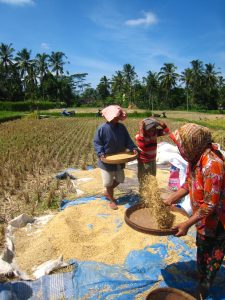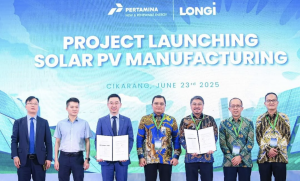by Giorgio Budi Indrarto*
In the prevailing discourse on development, “impact” is often defined as a final outcome—a tangible result produced after a series of interventions. It is framed within log frames, translated into metrics, and reported as achievements. However, realities on the ground are rarely that linear. Social change unfolds through long, uneven processes marked by leaps, stagnation, and even regression.
This is evident in Kapuas Hulu, West Kalimantan. For over a decade, the region has hosted numerous NGO programs, from eco-tourism and renewable energy to forest protection and Indigenous community empowerment. Each organisation arrived with its own framework, team, targets, and reporting systems. However, when revisiting the area years later, much of it feels stagnant. Programs have come and gone. Some left a mark, but many vanished as funding dried up or staff moved on.
The core issue does not lie in intention, but in the intervention logic itself. Many organisations operate within their own silos—disconnected from previous efforts and unaware of the importance of continuity. Projects become isolated—both in actors and vision. As Hilhorst (2003) highlighted in The Real World of NGOs, civil society organisations often struggle to balance normative values with the demands of donor-driven project logic.
In such contexts, conventional indicators of impact become misleading. The question is no longer “what was achieved?”, but “what was sustained?” Did the program open space for local actors? Did it strengthen social and institutional relationships? Did it continue the work already done, and pave the way for what comes next?
This calls for an alternative perspective: viewing impact not as a final destination, but as a trajectory. Trajectories imply continuity. Each program becomes one small step within a larger arc. It is not the centrepiece, but a contributing link. As Gertler et al. (2016) emphasised in Impact Evaluation in Practice, meaningful change is often collective and spans beyond a single project cycle.
A few organisations have begun to adopt this approach. They do not arrive with flashy branding, but with attentive listening. Their core function is bridging—connecting fragmented initiatives, documenting scattered learnings, and nurturing communication rhythms among actors. They do not seek ownership, but serve as connectors. In social network theory, they resemble bridge actors (Burt, 1992)—those who operate at the periphery of formal structures yet hold critical roles in facilitating flows of knowledge and ideas.
This kind of work, however, rarely fits within traditional project logics. It doesn’t deliver spectacular outputs or high-visibility achievements. Yet, as Savedoff et al. (2006) observed in When Will We Ever Learn, sustainability is often less about program intensity and more about the quality of relationships and locally rooted structures.
In fragmented NGO landscapes, the logic of trajectories offers a more grounded alternative: one that prioritises continuity over visibility, and connection over novelty. It is based on trust, collective memory, and a commitment to link, not to start from scratch.
Social change does not belong to a single actor, program, or cycle. It is a shared process that only survives when we understand that real impact is not what we leave behind when we finish, but what remains alive long after we are gone.
*The author is the Deputy Director of Yayasan Madani Berkelanjutan
Banner photo: Image generated by OpenAI’s DALL·E via ChatGPT (2025)













